Technically, this is a luggage test of the Escape Hybrid and Plug-In Hybrid since they both have the same 34.4 cubic-foot cargo number, versus the 37.5 cubic-feet of the gas-only version I previously luggage tested. However, I'm going to make this the new standard bearer for the entire Escape lineup. The 2 extra inches of height you get with the gas-only Escape doesn't seem to make a lick of difference considering the overall results did not get worse. If anything, they got a bit better since I made a few more Tetris attempts this time. Furthermore, I was able to sample a key cargo area element I couldn't before, and I tried my best to fit my bonus-item 38-quart cooler aboard since it so easily fits in the Escape's competitors.
In short, it doesn't seem to matter if you get a hybrid (you even keep the spare tire) and I did a more complete job this time around. In the end, though, the conclusion is the same: The Escape has the third-smallest cargo area of a non-luxury compact SUV I've tested. Only the Dodge Hornet and Jeep Compass have held less. But it does have some things going for it.
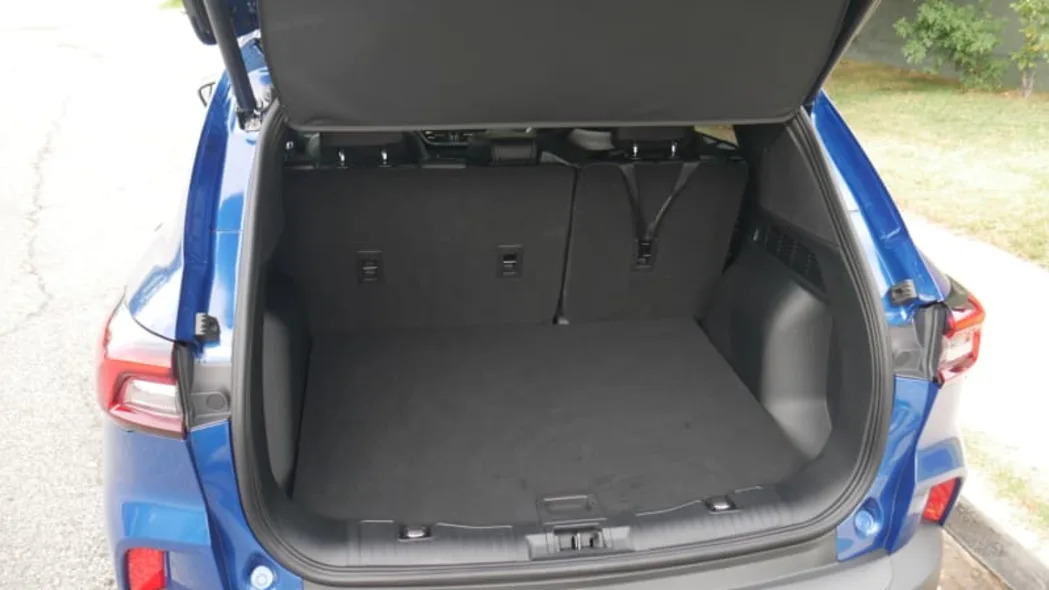
Here is the cargo area of the Escape PHEV. Again, its official number is 34.4 cubic-feet, but I have a strong suspicion given my findings of both tests that volume was measured with the 60/40-split back seat slid all the way forward. You'll see the proof later.

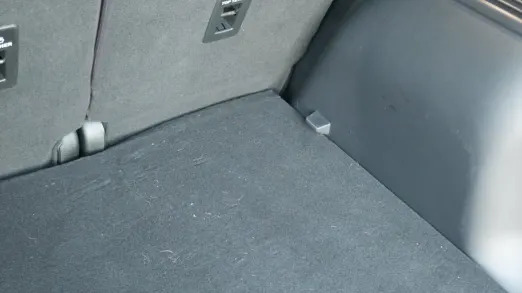
The Escape has a dual-level cargo floor, but the height difference is minuscule compared to others in the segment. The gap gets even smaller with the hybrid/PHEV. It was surprisingly difficult to fit the cargo floor between that nubbin and the foam tool holder below. You can actually see the floor touching that nubbin. By contrast, it does not in the regular Escape (the second/right picture above), illustrating the admittedly subtle height differences.
All pictures below are with the floor at the higher level. I did one attempt with the floor lowered and it made absolutely no difference, so I skipped the rest.
As with every Luggage Test, I use two midsize roller suitcases that would need to be checked in at the airport (26 inches long, 16 wide, 11 deep), two roll-aboard suitcases that just barely fit in the overhead (24L x 15W x 10D), and one smaller roll-aboard that fits easily (23L x 15W x 10D). I also include my wife's fancy overnight bag just to spruce things up a bit (21L x 12W x 12D).
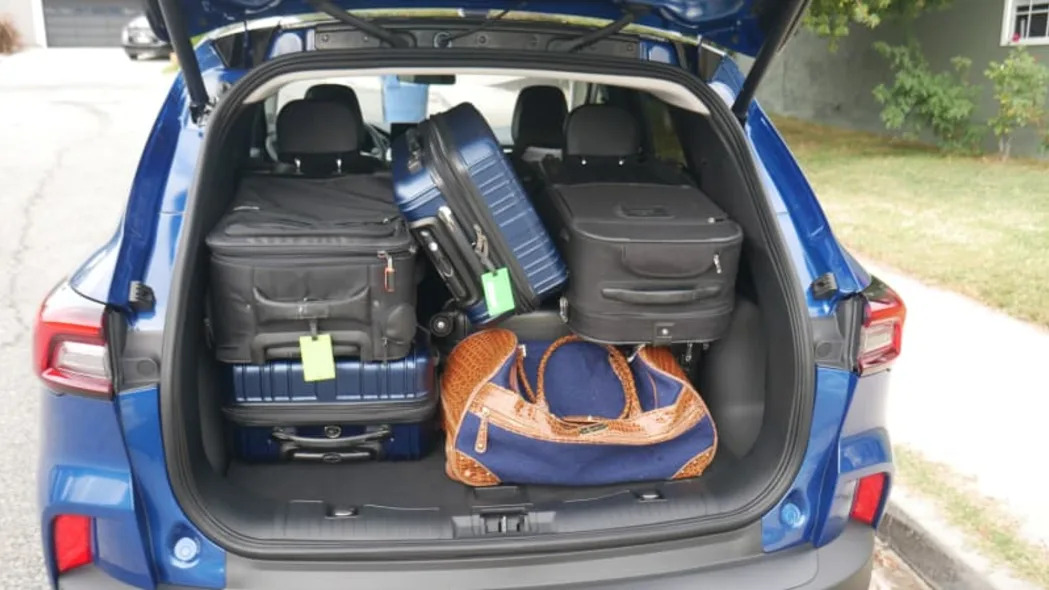
Quite simply, I did a much better job loading my bags in the Escape this time. I'll blame the fact it was September 2020 and I had a month-old infant at home during a pandemic.
The bags fit much better in this formation (the original had the fancy bag up high blocking most of the view).
That said, the smaller roller is obviously awkwardly placed, and there's virtually no room leftover. All the Escape's competitors have abundant room left over.
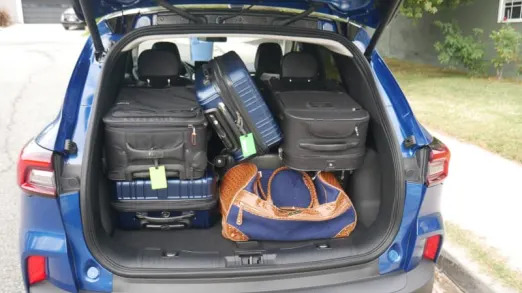

This would be my proof that the Escape's official volume figure is achieved by sliding the back seat fully forward. A total of 34.4 cubic-feet should make it only a little smaller than a CR-V Hybrid, but as you can see in the side-by-side photos above, the results aren't even close.
OK, so let's talk about that sliding seat.

Here is the regular Escape with the exact same bags and the back seat slid all the way forward this time. Looks a lot more like the CR-V, doesn't it?
I wasn't using the cooler back then, but it absolutely would've fit, as it does in the CR-V with room to spare.
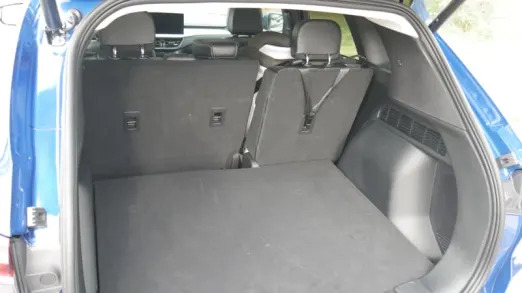
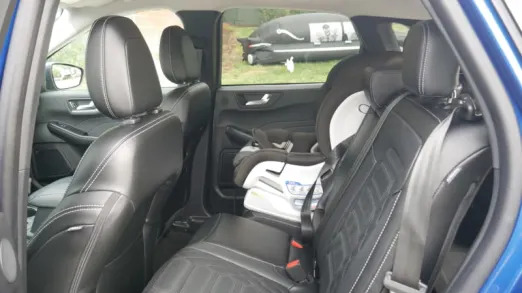
However, the trouble with using the sliding back seat is that you seriously reduce back seat legroom. No one can sit behind me with the driver seat all the way back (there's not exactly a wealth of legroom upfront, either). You either have to have an especially short driver, an especially generous front passenger OR (!) utilize the 60/40-split.
For Escape Luggage Test Round 2: I decided to test with this option to see how much could fit with the 40 portion back and the 60 portion forward.
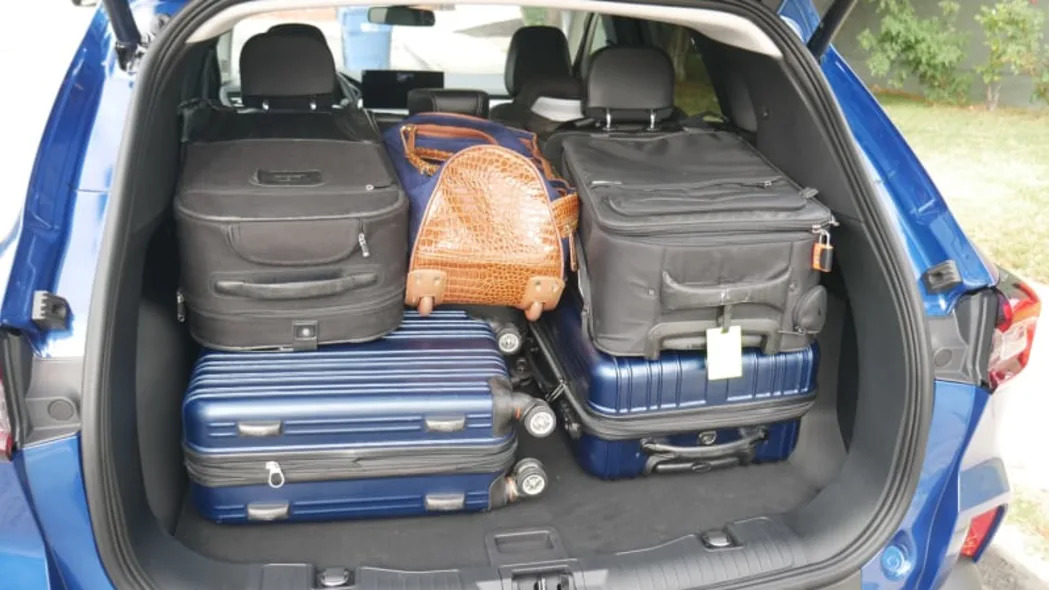
Here's all the bags again, and as you can see, it's a much neater fit with some room leftover. We're still not up to CR-V territory (let alone the better RAV4, Tucson and Sportage), but hey, it's an improvement.
But what about that cooler?
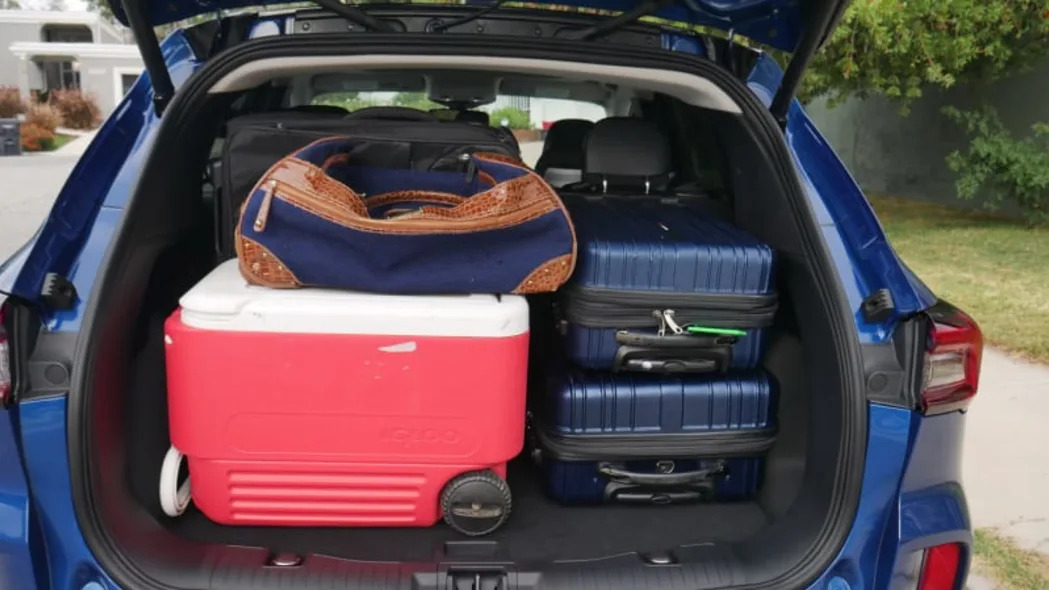
It fits! And although the fancy bag looks squished, it would still fit if full. Rear visibility is restricted, but you can still see through the rearview mirror (I have a picture, but do you really need the evidence?)
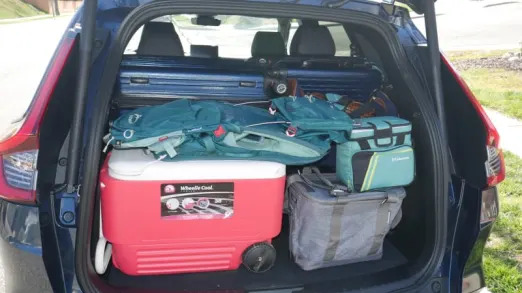
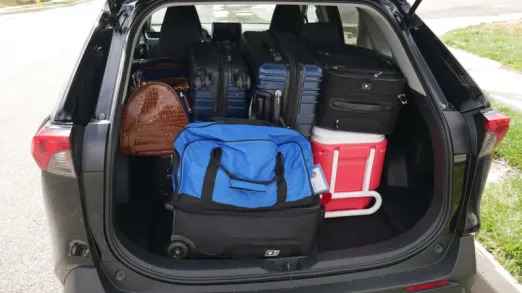
Above is the cooler in the CR-V (with green extra bags) and the Toyota RAV4. And again, they achieved this without moving their seats at all. To be fair, they can't.
There is a key difference between the CR-V and RAV4, however, which makes the Toyota the better analog for the Escape.
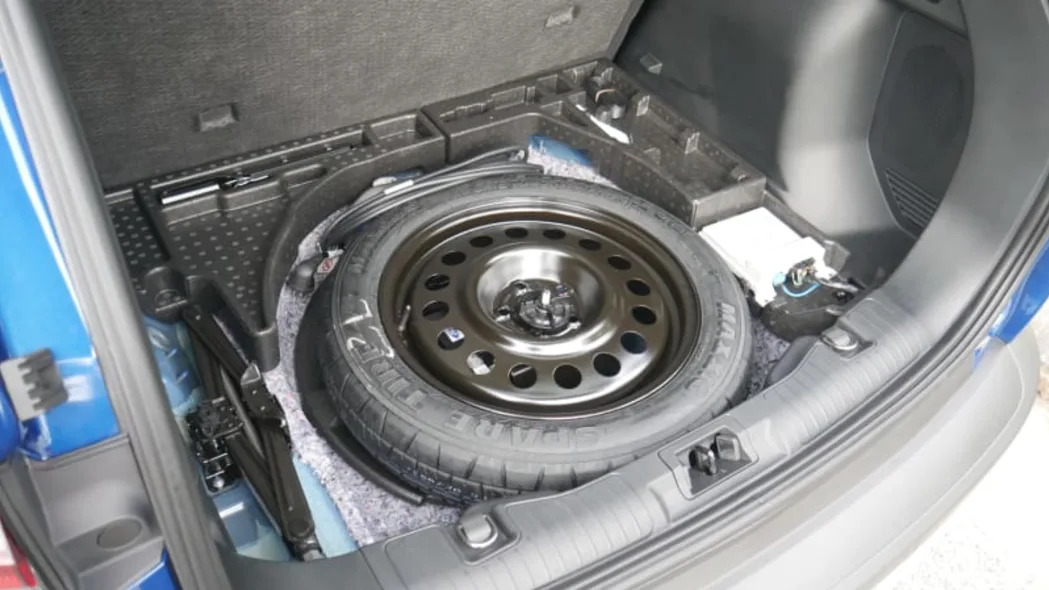
The Escape Hybrid has a spare tire. So does the RAV4 Hybrid and Kia Sportage Hybrid, but the CR-V and similarly jumbo Hyundai Tucson Hybrid do not.
BUT! This is an Escape Plug-In Hybrid, remember. The Sportage Plug-In Hybrid and RAV4 Prime do not have spares. Finally! Escape FTW!
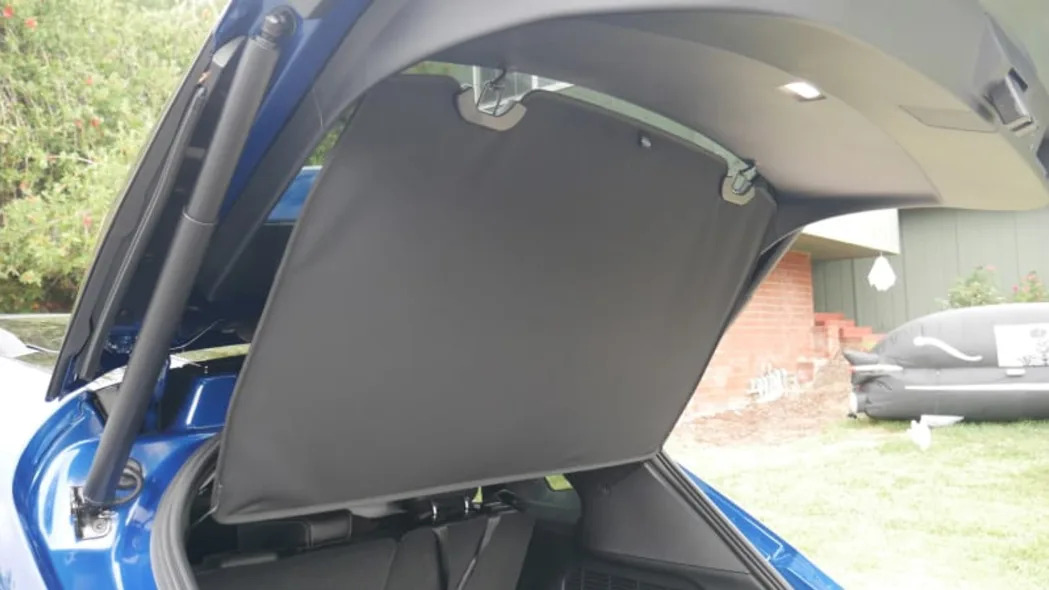
Now, here's something I couldn't test last time in the Escape: the cargo cover. It's a mesh sheet with a rigid frame, not unlike some windshield sunshades. The Mustang Mach-E has something similar. While this may seem flimsy compared to the big cargo covers of rivals that roll into a giant cartridge (I mean, it literally is), I think this is actually better. It guards your belongings from prying eyes just as well, but it takes up less space when installed and when stored inside the car ... which you can actually do unlike most of those cartridge covers.

Here it is folded up. Just twist and fold and voila, you can stuff it anywhere. No need to luggage test with and without it.
Oh, but damn, there's a problem.


It loops onto little round hook things on either side of the cargo area D pillars. After completing the test, I discovered that the hook on the right had disappeared after I removed the cover. I looked and looked and looked and I couldn't find the thing. Sorry Ford, but also, maybe come up with a more secure little round hook thing? It's not like I put a foot on the bumper and yanked the damn thing off.

Along the same lines, these are the plastic clasps on the liftgate that hold the cover's metal hooks. They immediately seemed very flimsy. I was actually being very careful removing the cover from these when I apparently yanked the other hook out of the wall.
Either way, this speaks to a general chintziness inside the Escape, something I more completely documented in the Escape Interior Review.
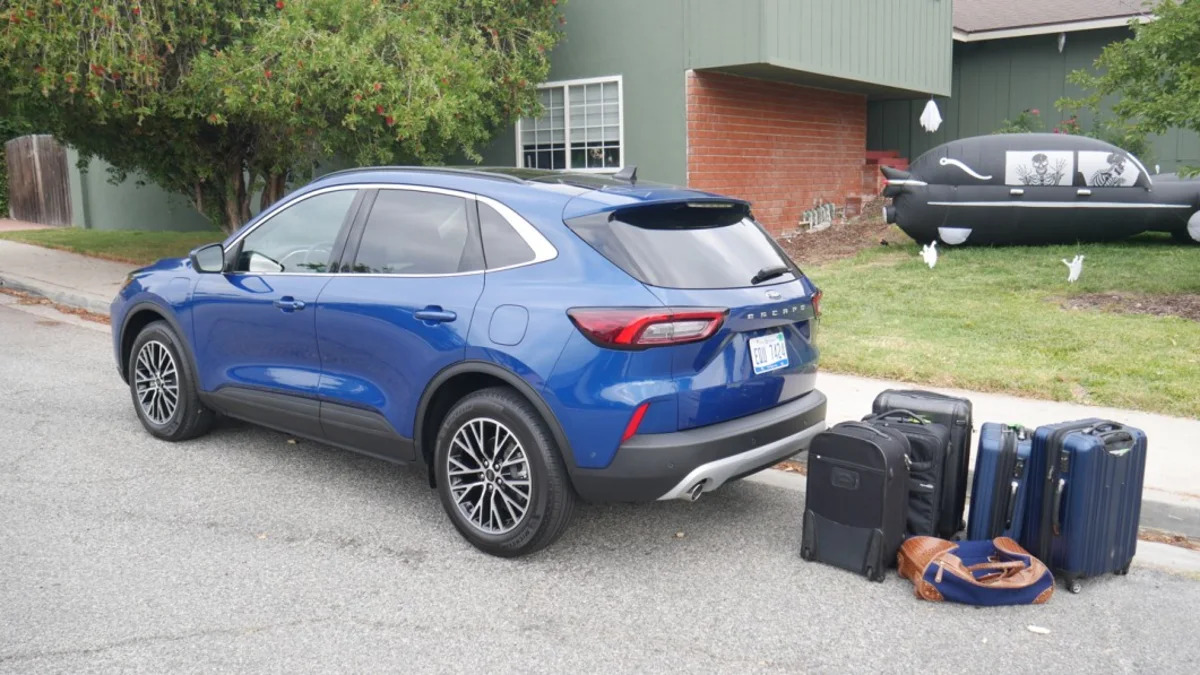


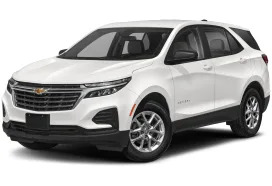
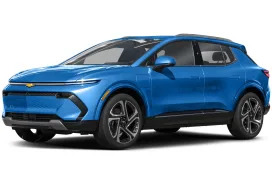

Sign in to post
Please sign in to leave a comment.
Continue